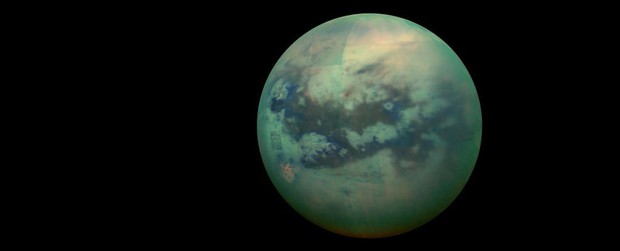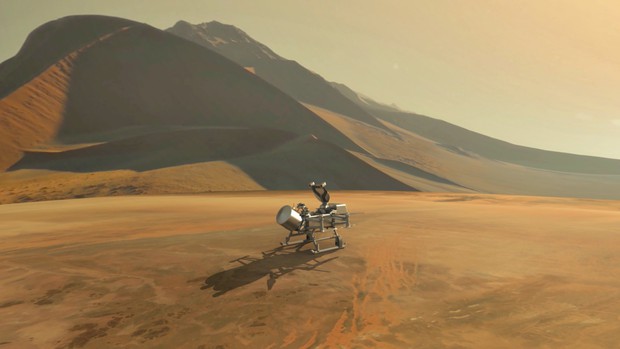It is the only place where there are seas, there are rivers, there are lakes, there is a thick enough atmosphere, but whether there is life or not.
Thanks to decades of research and research, astrophysicists have no way of finding evidence of life anywhere in the universe except on the planet we live on. However, they have also zoned a number of high potential areas, including those located in the solar system.
And during the press conference to announce the latest mission, NASA announced that it would send a robot to one of the most potential places in the universe. It is Titan – the moon of Saturn.
A new type of robot called a “dragonfly” will stand out to take on this task. About the size of a car, dragonflies are equipped with enough tools to identify organic molecules and equipment that allows them to fly to many different places. The mission should leave in 2026 and arrive in land and hydrocarbons in 2034.
“I think now is the right time to do it,” said Thomas Zurbuchen, a NASA scientist.
Why Titan?
Although it is only a satellite of Saturn, Titan is larger than Mercury and has a relatively diverse geographic structure similar to that of Earth. It is cold, but contains an atmosphere rich in methane, the surface of glaciers and even the ocean. In fact, off the Earth, it is the only surface sea in the solar system.
However, the liquid in the seas, rivers and lakes of Titan is not water, but liquid hydrocarbons. Titan has water, but they must be under mechanical ice.
It is believed that the complex carbon chains on Titan are the conditions for basic biochemical reactions to occur and may have similarities with Earth.
And with dragonflies, we have a great chance of “finding traces similar to what is happening on Earth”.
The project is worth $ 1 billion
“Dragonfly” is the fourth mission of NASA’s New Frontiers Project, with a total investment of approximately $ 1 billion. Previous missions involved the New Horizon – the ship that once crossed Pluto and the Kuiper Belt to cross the solar system; OSIRIS-REx ship to explore meteorites; and the Juno probe to Saturn.
The dragonflies are expected to land near Titan’s equator, which is home to snow dust and solid oil. The energy will be obtained from a small nuclear reactor, the material is plutonium – similar to the self-propelled robots currently operating on Mars. However, thanks to the new engine, it will have the ability to control a wider area than its predecessors.
“It’s actually easier to fly on Titan,” said Elizabeth Turtle, a researcher at Johns Hopkins University. The atmosphere here is thicker than Earth, and gravity is weaker as well.
Even so, controlling dragonflies is also more difficult. Titan is 43 light minutes from Earth, so it all depends almost entirely on how the robot works automatically.
Probably an unknown life form
According to Turtle, Titan could be a primitive Earth, before life appears and changes the face of the entire planet.
“It is like the perfect laboratory for observing the formation processes of life.”
Sarah Hörst, a member of the Johns Hopkins University team, compared Titan to … a kitchen where scientists find all the ingredients that make up life. But when you mix the ingredients together, you won’t know what it does, or maybe … nothing will happen.






